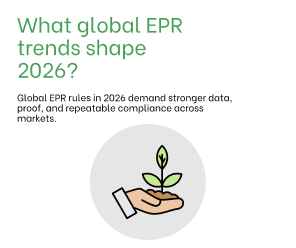US Sales tax basics for sellers who want to sell to the US
US Sales tax basics for sellers who want to sell to the US
The first thing you need to realize is that in terms of consumption taxes, the US states differ significantly from state to state. Even in one state sales tax rates differ from district to district. You always can use our calculator to check the tax rate for specific zip or IP address. You don’t need to register for the first sale. Each US state has a distant sales threshold and the average threshold is 200,000$ in annual sales to a specific state.
B2C Distant sales
If you are a non-US business and want to start selling to US customers.
Example: German company starts to sell goods to the US via its own website. Each order goes to the US in parcels from a warehouse in Germany. In such a case seller doesn’t have obligation to register unless they reach a threshold for a specific state. You can track your thresholds for free using the Lovat app. As soon as you reached a threshold for a specific state you have 30 days to apply for a sales tax permit.
Sales via Marketplace with US fulfillment center
When you are going to use a fulfillment center in the US you need to register for a sales tax permit within 30 days after your goods arrived in the US warehouse. You don’t need to register preliminary, as soon as the registration process doesn’t last longer than 30 days even for foreign companies. Most marketplaces would calculate and remit sales tax for your sales, but not all of them – you need to check this. Even if your marketplace would remit sales tax in some states where you use a warehouse you need to keep a sales tax permit.
Sales of digital services
If you sell digital services: games, SAAS, and media content you need to check your thresholds. Because they are not the same as the threshold for goods. For some states you also need to track a quantitative threshold – the average quantitative threshold is 200 transactions per year per state.
Sales from the US warehouse
If you sell within one state you need to check whether your state applies the destination or origin principle. If it applies the destination principle you need to charge a sales tax according to a customer address (ZIP). If this state applies the origin principle you can use a unified sales tax rate according to your warehouse or brick-and-mortar shop. When you sell intra-state you may not charge a sales tax unless you reached a threshold for a particular state.
B2B sales to the US
Generally, sales tax is meant for a final consumer. That means that when you sell to a business (wholesaler) with a sales tax permit and it gives you a resale certificate you don’t need to charge sales tax on such a sale. When you buy goods in the US for resale you may issue a resale certificate for such sale to avoid sales tax payment. Each state has its form of resale certificate which must contain the sales tax permit number of the buyer. Note that in some states B2B sales are also included in threshold calculation in spite they are exempt from sales tax. Dropship sales in the US.



